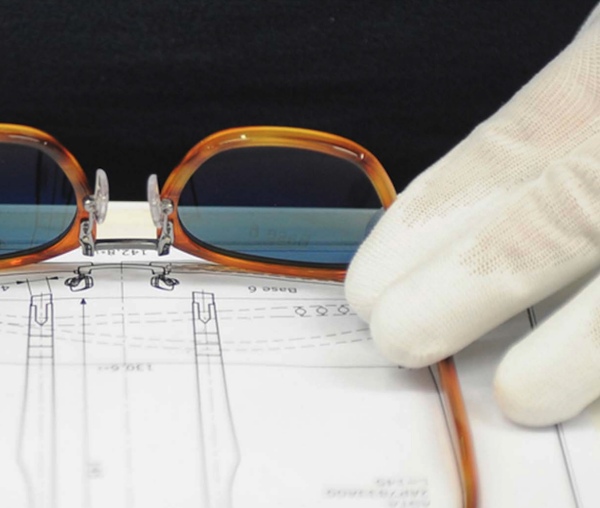The big brands of optics: Luxottica

Among the major optical brands, it is impossible not to mention Luxottica, world leader in the manufacture of frames . Founded in the early 1960s in Agordo, northern Italy, by a young 26-year-old entrepreneur, what started out as a small shop for optical components and accessories quickly grew into an international firm. Feedback on a dazzling success.
Luxottica: from the sale of accessories to international eyewear
1961. Leonardo Del Vecchio opens a small boutique of optical accessories in the Dolomites. The choice of the city, Agordo, is not trivial. Indeed, the largest industrial companies are located in the province of Belluno. The city of Agordo, eager to keep recognized know-how and expertise in its fold, offers free land and economic assistance to young entrepreneurs.

The young Leonardo, who made his ranges as an apprentice in the molding of medals, has great ambitions for his company. He wants his company to make and sell entire frames instead of just accessories. In 1971, he released his first pair of glasses. Luxottica then had less than ten employees and became a new emerging player in the eyewear sector.
Luxottica then took part in its first trade fair, at MIDO in Milan, and attracted attention. Order books are filling up and it is therefore necessary to recruit. The brand decides not to sell its creations directly on the market and works with independent distributors. This allows it to focus on marketing activities, product improvement and strengthening of the customer relationship.
In 1974, Luxottica acquired its first distributor, Scarrone SpA and then started its international ascent in 1981 by opening a first subsidiary in Germany . The company also bought the distributor Avant-Garde Optics to penetrate the American market. Luxottica's vertical business model is taking shape.
[Embed] https://www.youtube.com/watch?v=cwp46KQPr4Q&ab_channel=Luxottica [/ embed]
Offer a portfolio of major brands
Leonardo Del Vecchio notes that, from an accessory allowing visual correction, glasses are becoming a fashion phenomenon . He then decided to join forces with major fashion brands, of which Italy abounds. This is the case in 1988, when he signed a licensing agreement with Giorgio Armani, a symbol of Made in Italy excellence.
On January 24, 1990, the action of Luxottica group enters the New York Stock Exchange . A strategic decision that will allow it to strengthen its influence across the Atlantic. It was also in the 90s that Luxottica considerably expanded its portfolio of major brands, such as Brook Brothers (1990), Bulgari (1997), Chanel (1999), Ray-Ban (1999) but also the largest American chain of optics: LensCrafters.
Luxottica does not forget to take an interest in the growing trend of sunglasses and anticipates by acquiring other brands that matter in the sector, such as Oakley or Sunglass Hut. The rest is a succession of commercial successes, since other brands will come, in the 2000s, to enrich its portfolio. We can name, on the fly, Prada, Versace, Dolce & Gabbana, Burberry, Ralph Lauren, Michael Kors …
https://youtu.be/9h8lxjyCTeY [/ embed]
Luxottica then becomes the world leader in eyewear. On the strength of its notoriety, the group founded the NGO One Sight , in order to help populations in need to benefit from optical care and equipment . The group's contribution is financial and operational. Luxottica provides training to its employees wishing to help with One Sight's missions.
The last major chapter in Luxottica's history opened in 2018, with the merger of 'with Essilor , the world leader in lens manufacturing.


